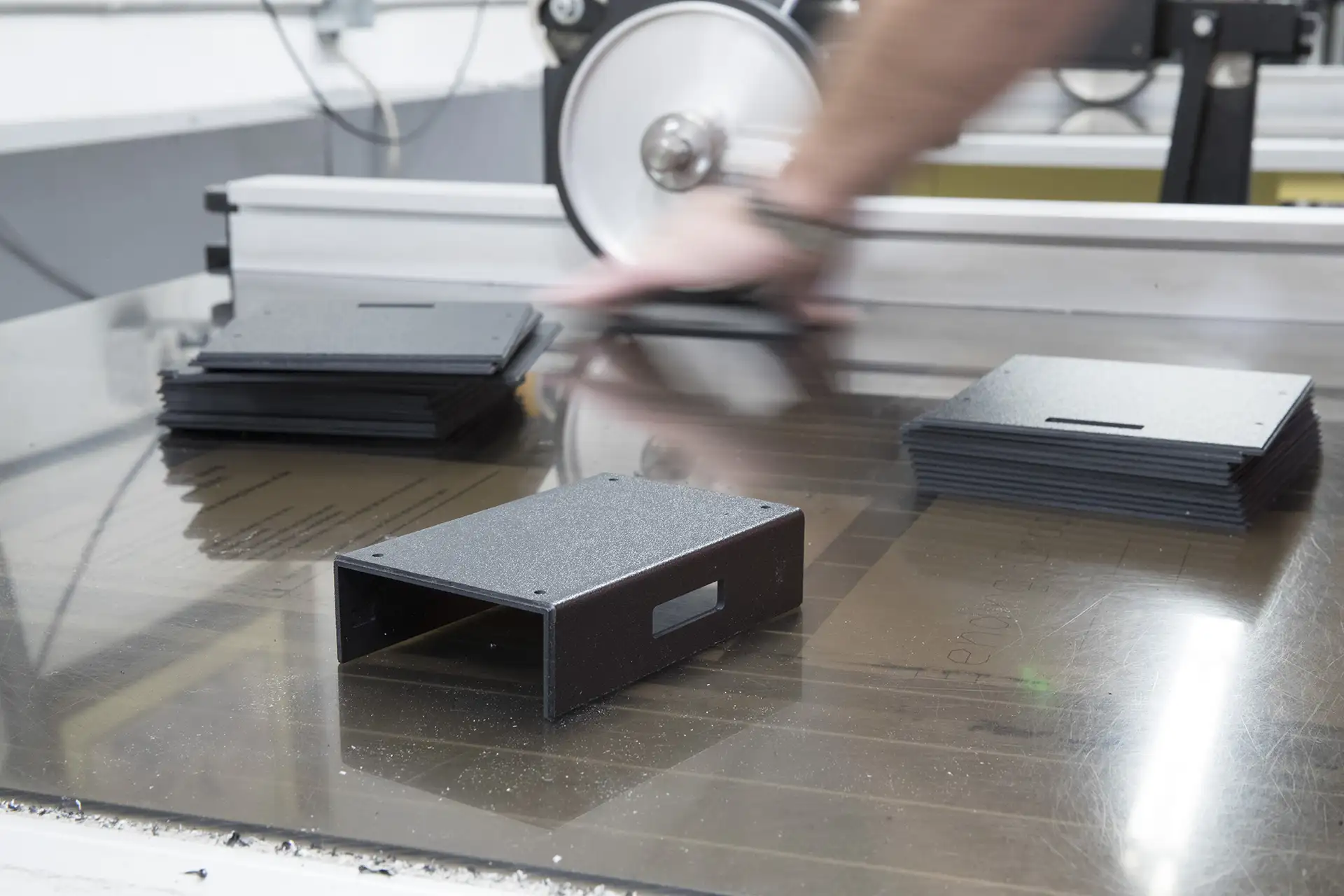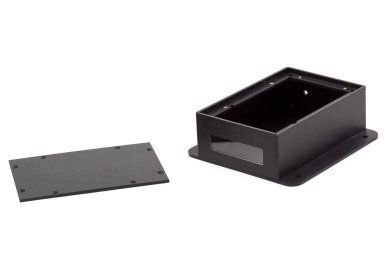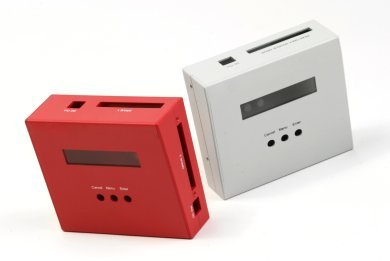
09/26/2018
Moving from "invention phase” to "product phase” can be difficult for any prototype. Here is what you need to consider for your next custom electronics box.
Perhaps your company’s latest prototype is sitting in a lab? Or, perhaps you created your own device that is tantalizing you from the corner of your desk? In either case, the project is nearly complete--everything has been rigorously tested and works properly. The days of fulfilling customer orders are not too far off; but, there is a critical piece still missing. Your robust electronics project has no housing case. It is exposed to the elements. It has no protection. It still looks like an ‘invention’ instead of a ‘product.’ But by adding a nicely designed custom enclosure, your invention will transition to the all-important product phase.

With no existing case for your new product, you have an idea in your mind of how the enclosure will look once it is complete. Perhaps it is sleek and nicely fitted around your prized invention. But creating it is not something you are ready to undertake as you just spent months (or more) laboring to create this new device. Thankfully, Envision Plastics & Design is here to help. Here are some things to consider for your custom electronics enclosure design project.
This is the most obvious consideration, but how big does your enclosure need to be to fully-enclose the device? Or how small do you want it to meet aesthetic requirements? These details must be ironed out and may require additional tweaking--not only of the enclosure but of the device, too. Regardless, determine a configuration for the device that makes sense and compactly arrange it so it can be encased. Figure out clearance and calculate the exterior dimensions. Any switches, lights, mounts, plug-ins, or other accessibility features should be considered as well. Thankfully, with NMR Technology, there is maximum design flexibility throughout the life of your custom enclosure project. There is no tooling necessary so modifications are seamless and there is no need to worry about scraping molds each time your product takes a design turn.
Since the project involves electronics, it will likely require internal features to keep the components from shorting or moving around the enclosure. Exposed wires may need to be insulated or secured to withstand motion, or for protection. The internal layout is critical and factors into consumer usability. Rapid movement and constant vibration may hurt product performance. Locking nuts, screws, or other hardware may be necessary for fastening items in place, or installing a removable cover.

If the design and dimensions are set, selecting the right material for a custom enclosure box is the next major decision. This decision is more aesthetically-based, but it also factors in cost and perception. Your product may have to withstand customer use (ahem, abuse) and needs an extremely durable material that offers maximum protection. Or, you are all about looks--something that is sleek and modern. But don’t forget cost, the all-important component that impacts every decision. Is there a cost-effective material that still offers great design and durability? Material choices impact the longevity of any product so here are a few options worth considering.
Compared to metal and wood, plastic is a great middle ground when analyzing cost and durability. Plus, advancements in the field of plastic engineering have led to plastic outperforming metal in many categories. Plastics are resistant to heat and chemicals, are thermally conductive, and offer more characteristics that are like metal. Plastic will not replace metal but it is becoming the material of choice for all these reasons. Plastics also have great flexibility when it comes to color choice. Any color can be chosen for a plastic enclosure which can be aligned with a company brand or image. Or you can go the transparent route and show off the electronics that are housed inside. Many times the electronics will speak for themselves and a clear plastic enclosure provides the best selling point for a popular product. Bottom line: Plastics give your product a high-quality feel without a significant cost.
So there it is, just a few things that need to be considered as you contemplate your custom electronics enclosure. Getting your product to function is one thing, but making it look good, is another. This important step and can determine the success/failure of the end product. No matter how magnificent the electronics are on the inside, a shoddy case that fails to protect them in a user-friendly manner can easily turn customers away. If you need help, Envision Plastics & Design is a unique plastic enclosure manufacturer that uses NMR Technology and provides custom design services. For enclosures, panels, shrouds, and other housings, we specialize in short to medium volumes and prototype manufacturing. Challenge us and see how we can help with your project.